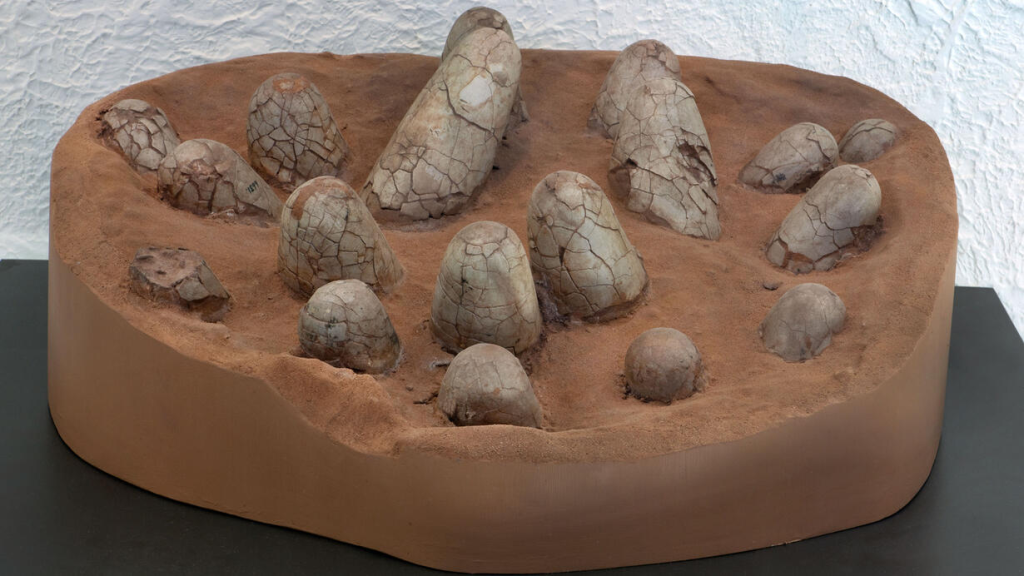
R. Mickens/© AMNH
Dinosaurs, like many other sauropsids, predominantly reproduced by laying eggs. Among the fascinating aspects of dinosaur reproduction is the discovery of fossilized eggs. However, identifying the exact species responsible for these eggs remains challenging due to the scarcity of intact dinosaur embryos found within them.
Regarding the size of dinosaur eggs, it’s a subject of intrigue. While some dinosaurs likely laid relatively large eggs, there are limitations to their size. Larger eggs require thicker shells for structural integrity, which prompts questions about the reproductive biology and physiology of these ancient creatures.
Dinosaur Parental Care

All dinosaurs, both extinct and modern birds, hatch from eggs, similar to their closest living relatives, crocodiles. Until the 1980s, fossilized eggs and young dinosaur bones were rare finds. However, recent discoveries across multiple continents have expanded our understanding. One notable discovery in Montana revealed a collection of duckbill dinosaur fossils, including eggs, nests, and individuals of varying ages, suggesting a communal nesting site. The presence of broken eggshells hints at the possibility of hatchlings inadvertently damaging them. Some scientists theorize that this site represents a nesting colony where adult dinosaurs provided care for their offspring in the initial months after hatching.
The Discovery of Dinosaur Eggs
One of the most significant moments during the American Museum of Natural History’s expedition to Central Asia in 1923 occurred at Mongolia’s Flaming Cliffs. Here, eggs were unearthed, initially believed to belong to the dinosaur Protoceratops. Roy Chapman Andrews, the expedition leader, vividly described the discovery in his field notes. Despite skepticism, the distinct egg-like appearance led to the conclusion that they were indeed dinosaur eggs. This groundbreaking find marked the first documented specimens of dinosaur eggs, confirming the long-held belief that dinosaurs laid eggs.

Paleontologists initially attributed the fossil eggs found at Flaming Cliffs to Protoceratops due to its prevalence in the area. However, expeditions in the 1990s led to the discovery of identical eggs, one containing an Oviraptor embryo. This finding reshaped the understanding of which dinosaur species laid these eggs. It revealed that Oviraptor was not an egg thief but rather a parent, challenging previous assumptions.

